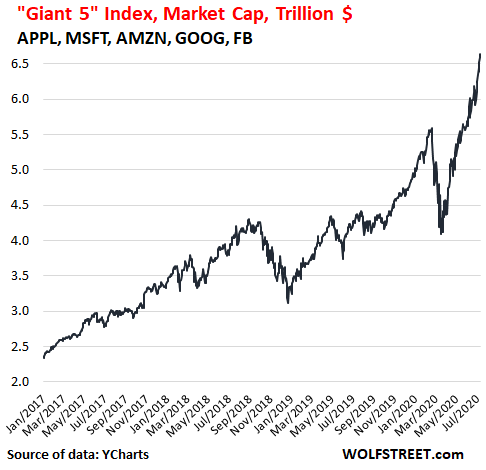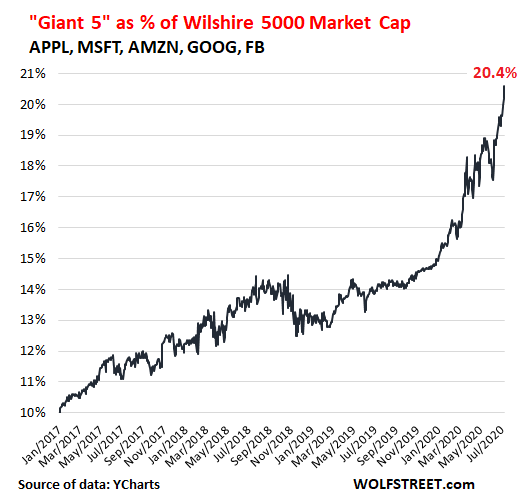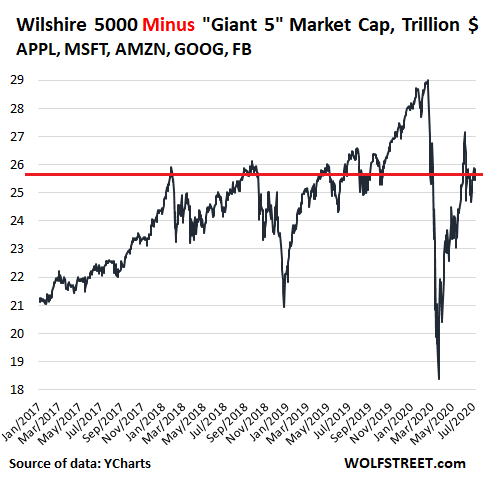Portland Police Union Burns in Latest Night of Protests in Portland (The Stranger)
Image: Mathieu Lewis-Roland
[ed. See also: Federal and Local Police Team Up in Aggressive Response to Day 50 of Portland Protests]
 These are musical experiences that can change the life of a young person. It can give them reason to believe in the power of art above all else, and it can encourage a desire to participate in this art at all costs. I was one of these young people. After seeing Vanessa-Mae on the Disney Channel at the age of three, I begged my parents to let me play the violin. They waited until I was four and had the motor skills to at least use a pair of scissors, and finally granted my wish. They rented my first violin, tiny and horrible sounding, from Johnson String Instruments. Growing up in rural North Carolina, I took violin lessons from a woman who lived in a trailer. She had a stern voice and wore muddy boots. I switched to private lessons from one of the local school teachers, before, in my senior year of high school, commuting to the nearest city to take precious few lessons with one of the musicians from the local symphony. I can’t remember a time in my life when I didn’t play the violin. It was the backbone of my upbringing, my adolescence, my young adulthood. My formative human experiences, heartbreaks, desires, triumphs, and joys all revolved around playing the goddamn violin.
These are musical experiences that can change the life of a young person. It can give them reason to believe in the power of art above all else, and it can encourage a desire to participate in this art at all costs. I was one of these young people. After seeing Vanessa-Mae on the Disney Channel at the age of three, I begged my parents to let me play the violin. They waited until I was four and had the motor skills to at least use a pair of scissors, and finally granted my wish. They rented my first violin, tiny and horrible sounding, from Johnson String Instruments. Growing up in rural North Carolina, I took violin lessons from a woman who lived in a trailer. She had a stern voice and wore muddy boots. I switched to private lessons from one of the local school teachers, before, in my senior year of high school, commuting to the nearest city to take precious few lessons with one of the musicians from the local symphony. I can’t remember a time in my life when I didn’t play the violin. It was the backbone of my upbringing, my adolescence, my young adulthood. My formative human experiences, heartbreaks, desires, triumphs, and joys all revolved around playing the goddamn violin. I mumbled that I was her granddaughter’s boyfriend and that I was from Scotland. “Oh, darling, you’ve traveled a long way today,” she croaked. “You must be hungry.”
I mumbled that I was her granddaughter’s boyfriend and that I was from Scotland. “Oh, darling, you’ve traveled a long way today,” she croaked. “You must be hungry.”


The cancel culture — the phenomenon of removing or canceling people, brands or shows from the public domain because of offensive statements or ideologies — is not a threat to the ruling class. Hundreds of corporations, nearly all in the hands of white executives and white board members, enthusiastically pumped out messages on social media condemning racism and demanding justice after George Floyd was choked to death by police in Minneapolis. Police, which along with the prison system are one of the primary instruments of social control over the poor, have taken the knee, along with Jamie Dimon, the chief executive of the serially criminal JPMorgan Chase, where only 4 percent of the top executives are Black. Jeff Bezos, the richest man in the world whose corporation, Amazon, paid no federal income taxes last year and who fires workers that attempt to unionize and tracks warehouse laborers as if they were prisoners, put a “Black Lives Matter” banner on Amazon’s home page.
The rush by the ruling elites to profess solidarity with the protestors and denounce racist rhetoric and racist symbols, supporting the toppling of Confederate statues and banning the Confederate flag, are symbolic assaults on white supremacy. Alone, these gestures will do nothing to reverse the institutional racism that is baked into the DNA of American society. The elites will discuss race. They will not discuss class.To repeat: Hundreds of corporations, nearly all in the hands of white executives and white board members, enthusiastically pumped out messages on social media condemning racism and demanding justice after George Floyd was choked to death by police in Minneapolis.
 Blithe denials that Covid-19 posed a threat gave way to blithe denials that rapid reopening would lead to a new surge in infections; now that the surge is upon us, Republican governors are responding sluggishly and grudgingly, while the White House is doing nothing at all.
Blithe denials that Covid-19 posed a threat gave way to blithe denials that rapid reopening would lead to a new surge in infections; now that the surge is upon us, Republican governors are responding sluggishly and grudgingly, while the White House is doing nothing at all. A couple of years ago, I landed on the humble authority of the Food Timeline while doing research on bread soup, a kind of austerity cuisine found in countless cultures. The entry for soup alone spans more than 70,000 words (The Great Gatsby doesn’t break 50,000), with excerpts from sources like Maguelonne Toussaint-Samat’s A History of Food, John Ayto’s An A-Z of Food and Drink, and D. Eleanor Scully and Terence Scully’s Early French Cookery. Before long, I fell into the emotional condition known as an internet K-hole, following link after link after link for hours on end. From olla podrida to hodge podge to cassava to taro to Chex Mix to Johnnycakes, the Food Timeline covered everything. Did you know that mozzarella sticks go as far back as the Middle Ages, but back then they called them “pipefarces”? I bookmarked the site and returned to it time and time again, when I was researching, writing, or just bored and hungry.
A couple of years ago, I landed on the humble authority of the Food Timeline while doing research on bread soup, a kind of austerity cuisine found in countless cultures. The entry for soup alone spans more than 70,000 words (The Great Gatsby doesn’t break 50,000), with excerpts from sources like Maguelonne Toussaint-Samat’s A History of Food, John Ayto’s An A-Z of Food and Drink, and D. Eleanor Scully and Terence Scully’s Early French Cookery. Before long, I fell into the emotional condition known as an internet K-hole, following link after link after link for hours on end. From olla podrida to hodge podge to cassava to taro to Chex Mix to Johnnycakes, the Food Timeline covered everything. Did you know that mozzarella sticks go as far back as the Middle Ages, but back then they called them “pipefarces”? I bookmarked the site and returned to it time and time again, when I was researching, writing, or just bored and hungry. As the pandemic vise tightened again this summer, the sea change appears to be accelerating. The Seattle Times reports that at least 20 more restaurants have folded, including Bill’s Off Broadway, which was there on lower Capitol Hill for 40 years. And unimaginably, Jules Maes Saloon, arguably the oldest bar in Seattle, which had survived in the industrial Georgetown neighborhood since 30 years before the 1918 Spanish flu pandemic.
As the pandemic vise tightened again this summer, the sea change appears to be accelerating. The Seattle Times reports that at least 20 more restaurants have folded, including Bill’s Off Broadway, which was there on lower Capitol Hill for 40 years. And unimaginably, Jules Maes Saloon, arguably the oldest bar in Seattle, which had survived in the industrial Georgetown neighborhood since 30 years before the 1918 Spanish flu pandemic. The economy seized in unprecedented terms this spring as states and cities mandated lockdowns. Hundreds of thousands of businesses closed, and millions of workers were furloughed or laid off. But instead of setting up a national viral-control strategy during this time, as other rich countries did, the United States did close to nothing. Congress underfunded disease research and contact-tracing efforts. No federal agency coordinated the procurement of personal protective equipment. Months into the pandemic, health professionals were still reusing masks for days at a time. The Trump administration punted responsibility for public-health management to the states, each tipping into a budgetary crisis. After a springtime peak, caseloads declined only modestly. Outbreaks seeded across the country. States reopened, and counts exploded again.
The economy seized in unprecedented terms this spring as states and cities mandated lockdowns. Hundreds of thousands of businesses closed, and millions of workers were furloughed or laid off. But instead of setting up a national viral-control strategy during this time, as other rich countries did, the United States did close to nothing. Congress underfunded disease research and contact-tracing efforts. No federal agency coordinated the procurement of personal protective equipment. Months into the pandemic, health professionals were still reusing masks for days at a time. The Trump administration punted responsibility for public-health management to the states, each tipping into a budgetary crisis. After a springtime peak, caseloads declined only modestly. Outbreaks seeded across the country. States reopened, and counts exploded again. My friends and I tried to look after R., taking him to dinner or paying his phone bill or letting him do laundry in our homes. I was drawn to R. partly because I couldn’t help but see some of myself in him, and had a gnawing fear that his plight would one day be my own. He was, in his way, an intellectual, who actually read at least a few of the periodicals he collected and enjoyed arguing about politics. I’d often see him in the local used bookstore I frequented, and that must have been where he pressed Scialabba’s What Are Intellectuals Good For? into my hands. “This is the good shit,” he solemnly professed, and he was right. R. had been an alcoholic, and I’d gleaned that when he finally kicked booze the withdrawal caused a breakdown from which he’d never quite recovered. I knew I sometimes drank too much, too, and for the wrong reasons—enough to watch myself. We shared both hypochondria and a dread of visiting the doctor. I wasn’t a manic depressive, but for much of the time I knew R. I was in the throes of the worst severe depression of my life.
My friends and I tried to look after R., taking him to dinner or paying his phone bill or letting him do laundry in our homes. I was drawn to R. partly because I couldn’t help but see some of myself in him, and had a gnawing fear that his plight would one day be my own. He was, in his way, an intellectual, who actually read at least a few of the periodicals he collected and enjoyed arguing about politics. I’d often see him in the local used bookstore I frequented, and that must have been where he pressed Scialabba’s What Are Intellectuals Good For? into my hands. “This is the good shit,” he solemnly professed, and he was right. R. had been an alcoholic, and I’d gleaned that when he finally kicked booze the withdrawal caused a breakdown from which he’d never quite recovered. I knew I sometimes drank too much, too, and for the wrong reasons—enough to watch myself. We shared both hypochondria and a dread of visiting the doctor. I wasn’t a manic depressive, but for much of the time I knew R. I was in the throes of the worst severe depression of my life.He now has multiple fears of losing control, which he fantasizes would result in his becoming passive, being unable to hold a job, going on welfare or into a hospital, and not being able to take care of himself.Such consuming worry about “losing control,” about being unable to keep it together, is a recurring theme in the literature about depression—not merely intense sadness, but the threat of personal dissolution. William Styron, in Darkness Visible, relays a conversation with a suffering friend who told him that his depression made him feel “helpless.” An especially wrenching scene in Andrew Solomon’s The Noonday Demon is when his father literally has to feed him. Depression makes ordinary tasks appear as looming impossibilities. Work suffers; social occasions become exhausting burdens; getting out of bed takes heroic effort.